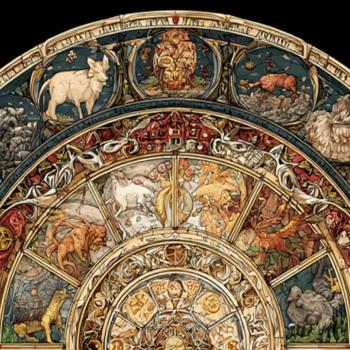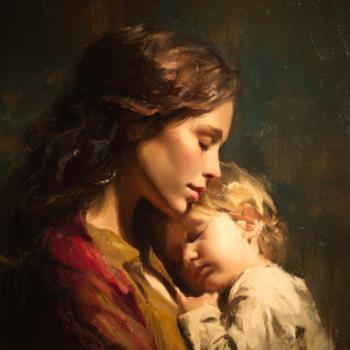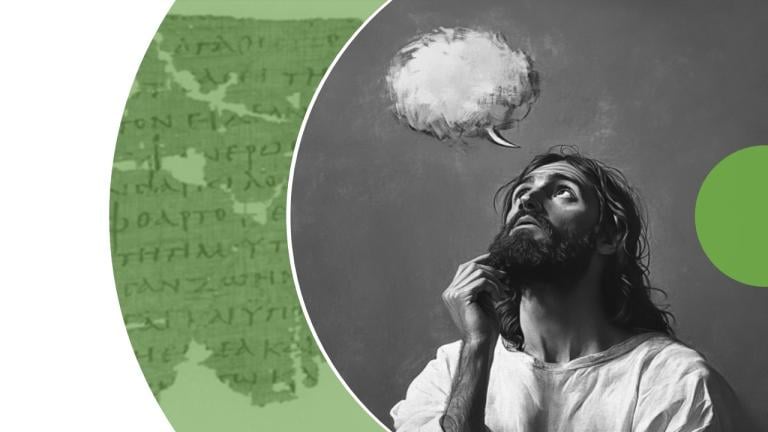
“…good Father…introduces (?) the simple and incorruptible form. Therefore, I say, Mary: I showed myself as the artificer of mind in the logos made flesh filled with the incorruptible Father, awakening through my kindness the hidden life of the Father…form and…””…will fall on the earth. [John] said: “I bathe you with water, but a man will come and will bathe you with fire and spirit.” Therefore, I say to you, Mary: seek to mix water and fire and you will no longer appear as an image of flesh, but an image of the eternal incorruptible light, bringing together for you, Mary, intellectual spirits from the two intertwined and dissolved elements.’” [P. Oxy 5577]
Since the publication of P. Oxy 5577 above, noted scholars such as Elizabeth (Libbie) Schrader Polczer and Sarah Parkhouse have published academic articles suggesting that it might be a fragment from the missing pages of the Gospel of Mary.
This fragment, recently translated in 2023, is dated to the fourth century and is very similar in content to a description of the Valentinian “Heavenly Bridal Chamber” concept which is preserved for us in the writings of opponents like Irenaeus who, as we know, was writing in the second century.
Therefore, these ideas in the fragment above are consistent with other known second-century Christian writings such as we find in the Gospel of Mary, (also dated to the second century).
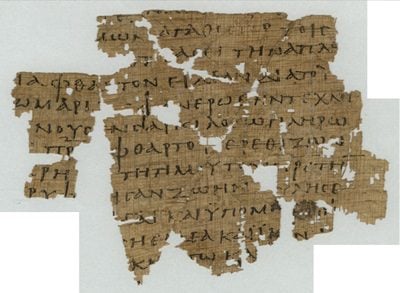
So, if this is the case, then what are the clues that connect it to the Gospel of Mary?
One obvious connection between this fragment and the Gospel of Mary is the mention of the mind at the very beginning where Jesus says, “Therefore, I say, Mary: I showed myself as the artificer of mind in the logos made flesh…”
The section in the Gospel of Mary just before the pages are removed contains a dialog between Jesus and Mary where he tells her: “For where the mind is, there is the treasure.” This certainly feels like a continuation of that same conversation about the mind, doesn’t it? And the very last sentence in the Gospel of Mary preceding the missing pages says this:
“The Savior answered and said, ‘One does not see with the soul or with the spirit, but the mind which is between the two sees the vision…”
So, if we can assume that have, indeed, found a missing section of those censored pages from Mary’s Gospel, what, if anything, can we learn from this fragment? Let’s take a closer look.
Does P. Oxy 5577 Fit With Mary’s Gospel?
The fragment begins at the end of a sentence which says: “…good Father…introduces (?) the simple and incorruptible form.” This doesn’t give us a lot to go on. We can make an educated guess that what Jesus is referring to is his own incarnation.
Especially based on what comes next: “Therefore, I say, Mary: I showed myself as the artificer of mind in the logos made flesh filled with the incorruptible Father…”
This gives us a clue that Jesus is explaining to Mary the nature of the mystery of his incarnation. Not merely of the logos [as we read in the first chapter of John’s Gospel], but as the “artificer of mind in the logos made flesh” and “filled with the incorruptible Father.”
What does it mean when Jesus identifies himself as “the artificer of mind”? Is he saying that he created the mind? Or, is he saying that he has shown himself to be a master craftsman of the mind?
Either translation works, and so either Jesus is claiming to be the One who created Consciousness, or he is simply saying that he has “shown himself” [or proven himself] as one who has “mastered the art of the mind in the logos made flesh [which is] filled with the incorruptible Father.”
Proto-Orthodox Christians interpreted these sayings as being uniquely about the person of Jesus. Valentinian Christians [and some Gnostic Christians] took these sayings to mean that Jesus realized he was already the incarnation of the logos who was filled with the pure light of the Father, just like everyone else. In other words, Jesus awakened to his shared Divinity and shared Humanity and then did all he could to wake others up to this same reality.
This is why some Christians read verses in the Gospel of John as being only about Jesus while others read those same statements as being universal to all of us.
For example, when Jesus says to his disciples: “In that day you will realize that I am in the Father, and you are in me and I am in you,” he wasn’t speaking only of himself. He was trying to tell them that one day they would have the same realization that he was having: That they were in the Father and in one another, too.
The idea of Jesus awakening to this realization carries on into this P. Oxy 5577 fragment which says: “…awakening through my kindness the hidden life of the Father…[and] form…”.
Enter John the Baptist
The fragment continues with a reference to John the Baptist as it says: “[fire?]…will fall on the earth. [John] said: “I bathe you with water, but a man will come and will bathe you with fire and spirit.”
This section is almost a verbatim quote from the Gospel of Matthew where John says:
“I indeed baptize you in water unto repentance: but he that cometh after me is mightier than I, whose shoes I am not worthy to bear: he shall baptize you in the Holy Spirit and in fire” [Matt. 3:11]
So, from this reference, we can surmise that Jesus might be speaking of fire falling on the earth just before he quotes John the Baptist’s famous line about Jesus coming to baptize [bathe] us “with fire and spirit.” But, what do these metaphors point to? What is meant by being bathed “with fire and spirit”?
Again, it depends on who you ask. Proto-Orthodox Christians might have said this was a reference to God’s wrath [the fire] and God’s mercy [the Spirit]. Others might have said that the fire was a reference to purification [as when those who pass through the fire are refined as gold and silver], and that the Spirit was a reference to Pentecost where God poured out His Spirit on all flesh: young and old, male and female, etc.
The Valentinian Perspective
From a Valentinian point of view, being bathed in fire and spirit might be a reference to something found in yet another lost Gospel, as Sarah Parkhouse writes:
“The most relevant intertextual connection to the mixing of fire and water is in the Gospel of Philip, which reads that “it is from water and fire that the soul and spirit came into being” (67,2–3) and that “through water and fire everything is purified, the revealed by means of the revealed, the hidden by means of the hidden” (57,22–23), possibly referring to a ritual context.” [1]
So, for those of us seeking to understand the true meaning of these words, it is most likely that being bathed in fire and spirit is a reference to water and fire being mixed to create the soul and the spirit, and the idea of purification of them both. This leads us directly into the final sentence of P. Oxy 5577 which says:
“Therefore, I say to you, Mary: seek to mix water and fire and you will no longer appear as an image of flesh, but an image of the eternal incorruptible light, bringing together for you, Mary, intellectual spirits from the two intertwined and dissolved elements.’”
Do you see it? Jesus urges Mary to “mix water and fire” – this is a direct parallel to what the Gospel of Philip says about how soul and spirit were created. When Mary does this, Jesus says that she “will no longer appear as an image of flesh, but [as] an image of the eternal incorruptible light.” This same “incorruptible light” that Mary transforms into is analogous to how Jesus describes himself earlier in this fragment as “…the artificer of mind in the logos made flesh filled with the incorruptible Father.”
In other words, what has happened to Jesus can and will happen to Mary, and to any of us who find ourselves “awakening…[to] the hidden life of the Father,” which is already alive within us.
[1] See “Papyrus Oxyrhynchus 5577”, compiled by Sarah Parkhouse, North American Society for the Study of Christian Apocryphal Literature [NASSCAL], April 2024. https://www.nasscal.com/e-clavis-christian-apocrypha/papyrus-oxyrhynchus-5577/
**
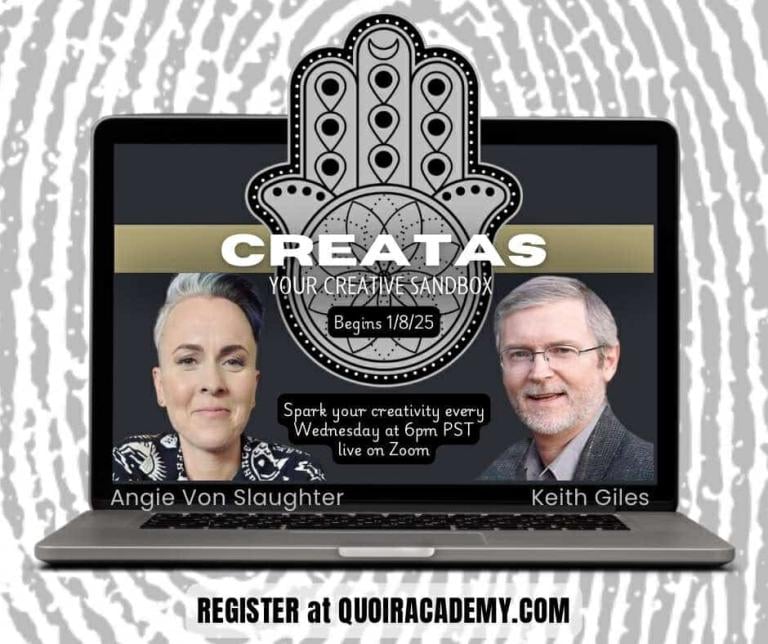
Excited to announce the new weekly online course I’ll be co-hosting with artist/musician Angie Von Slaughter starting Wednesday, January 8th.
Are you a creative person who struggles to find new ideas? Or maybe you’ve got too many ideas but you just don’t know how to get started? This course is a Live Online Zoom call where we gather with other artists to explore creativity and share exercises and prompts to help us unlock our creativity together.
Register now and save 20% off for a limited time only>
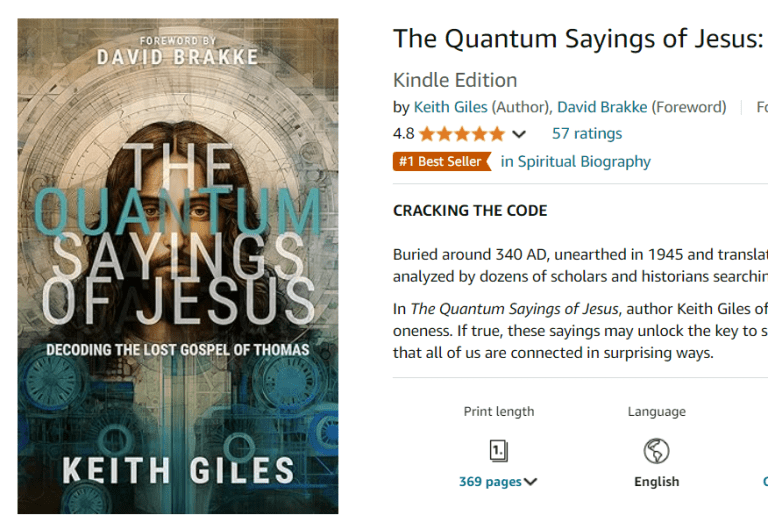
The newest book from Keith Giles, “The Quantum Sayings of Jesus: Decoding the Lost Gospel of Thomas” is available now on Amazon. Order HERE>
Keith Giles is the best-selling author of the Jesus Un series. He has appeared on CNN, USA Today, BuzzFeed, and John Fugelsang’s “Tell Me Everything.”
He co-hosts The Heretic Happy Hour Podcast and his solo podcast, Second Cup With Keith which are both available on Spotify, Amazon, Apple, Podbean or wherever you find your podcast fix.




